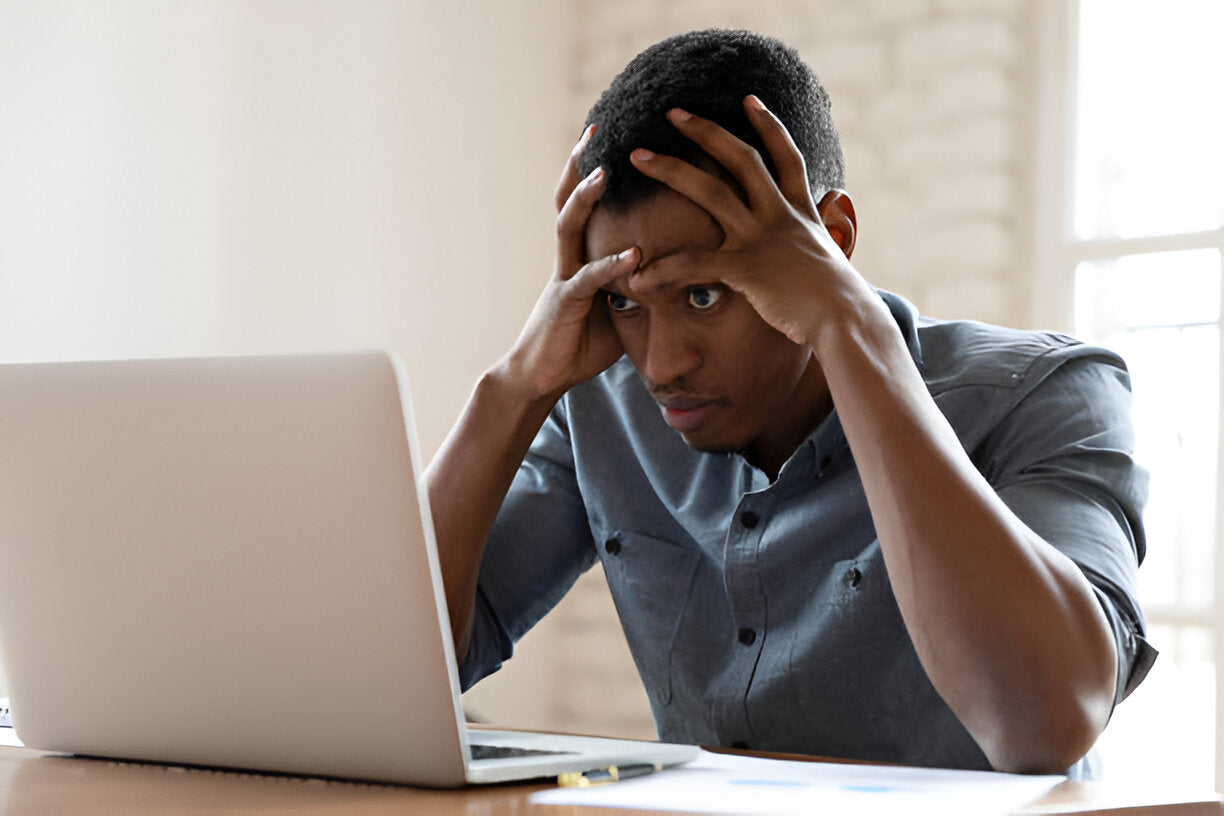If you're are looking to fix your slow laptop in Kenya, don't worry! Over time, even the most powerful laptops can experience performance issues. This comprehensive guide will provide you with effective solutions to boost your laptop's speed and efficiency.
Common Causes of a Slow Laptop in Kenya
- Overloaded Storage: As you accumulate files, documents, and applications, your laptop's storage can become cluttered, leading to slower performance.
- Outdated Software: Running outdated operating systems, drivers, and applications can hinder your laptop's speed and stability.
- Malware and Viruses: Malicious software can consume system resources, causing sluggishness and potential security risks.
- Resource-Hungry Applications: Certain applications, especially those running in the background, can demand significant system resources, impacting overall performance.
- Hardware Issues: Overheating, hardware failures, or physical damage can contribute to slowdowns.
1. Software-Based Solutions to Fix a Slow Laptop
1.1 Stop Programs Running on Startup
Many programs are configured to start automatically when you turn on your laptop.

These programs can consume valuable resources, slowing down your system. To improve performance:
- Access Startup Settings: Press Ctrl+Shift+Esc to open the Task Manager.
- Navigate to Startup Tab: Click on the Startup tab.
- Disable Unnecessary Programs: Identify programs you don't need to start automatically and disable them by right-clicking and selecting Disable.
Regular updates introduce critical security patches, bug fixes, and performance enhancements. To keep your laptop running smoothly:
- Check for Windows Updates: Go to Settings > Update & Security > Windows Update and check for available updates.
- Update Drivers: Visit your laptop manufacturer's website to download the latest drivers for your device.
- Update Applications: Ensure that your installed applications are up-to-date. Many software developers release regular updates to improve performance and address issues.
1.3 Delete Unneeded Files

Over time, your laptop accumulates temporary files, cache data, and other unnecessary files that can take up valuable storage space. To free up space and improve performance:
- Empty Recycle Bin: Regularly empty your recycle bin to permanently delete deleted files.
- Delete Temporary Files: Use the Disk Cleanup tool (accessible from the Control Panel) to remove temporary files, system files, and other unnecessary data.
- Remove Unused Applications: Uninstall applications you no longer use to free up storage space.
1.4 Identify Resource-Hungry Applications

Some applications are more demanding than others, consuming significant system resources. To identify and manage these applications:
- Monitor Task Manager: Use the Task Manager to monitor CPU usage, memory consumption, and disk activity.
- Close Unnecessary Applications: Close any applications that are consuming excessive resources but are not actively in use.
- Prioritize Essential Applications: Focus on using applications that are critical for your tasks and close less essential ones.
1.5 Adjust Your Power Options

Your laptop's power settings can impact performance. If you're primarily using your laptop on AC power, consider adjusting the power plan to prioritize performance over battery life:
- Access Power Options: Go to Control Panel > Hardware and Sound > Power Options.
- Choose a Balanced or High-Performance Plan: Select the Balanced or High-Performance power plan.
- Adjust Settings: Within the selected power plan, adjust settings like screen brightness, hard drive sleep, and USB power savings to optimize performance.
1.6 Uninstall Programs You Don't Use
Having numerous unused programs installed can clutter your system and slow it down. To improve performance:
- Identify Unused Programs: Review your list of installed applications and identify those you no longer use.
- Uninstall Programs: Use the Control Panel > Programs > Programs and Features to uninstall unwanted programs.
1.7 Turn Windows Features On and Off
Windows comes with various features that may not be necessary for your daily use. Disabling these features can improve performance:
- Access Windows Features: Search for "Turn Windows features on or off" in the Start menu.
- Disable Unnecessary Features: Uncheck features you don't need, such as Windows Media Player, Fax and Scan, and optional components.
- Apply Changes: Click OK to apply the changes.
1.8 Run a Disk Cleanup
The Disk Cleanup tool is a built-in utility that can help you identify and remove unnecessary files from your system. To use Disk Cleanup:
- Access Disk Cleanup: Search for "Disk Cleanup" in the Start menu.
- Select a Drive: Choose the drive you want to clean up.
- Review Files: Review the list of files that can be deleted and select the appropriate options.
- Clean Up: Click OK to start the cleaning process.
1.9 Defragment Your Hard Drive
Over time, files on your hard drive can become fragmented, leading to slower access times. Defragmenting your hard drive can improve performance:
- Access Defragmentation Tool: Search for "Defragment and Optimize Drives" in the Start menu.
- Select a Drive: Choose the drive you want to defragment.
- Optimize Drive: Click Optimize to start the defragmentation process.
1.10 Adjust Graphics and Animations Settings
Reducing visual effects can improve performance, especially on older or less powerful laptops:
- Access System Settings: Go to Control Panel > System and Security > System.
- Adjust Advanced System Settings: Click on Advanced system settings.
- Adjust Performance Settings: Click on the Performance tab and select Adjust visual effects.
- Choose a Setting: Choose the Adjust for best performance option to disable most visual effects.
1.11 Check for Malware
Malware and viruses can significantly impact your laptop's performance. Regularly scan your system for malware using a reliable antivirus program:
- Install a Reputable Antivirus: Choose a reputable antivirus program and install it on your laptop.
- Perform Full Scans: Regularly perform full system scans to detect and remove any malware.
- Keep Antivirus Updated: Ensure your antivirus software is always up-to-date with the latest virus definitions.
1.12 Disable Cortana
Cortana, the virtual assistant in Windows, can consume system resources. If you don't use Cortana, consider disabling it:
- Open Cortana: Click on the Cortana icon in the taskbar.
- Access Settings: Click on the Settings gear icon.
- Disable Cortana: Toggle the Hey Cortana switch to the Off position.
1.13 Restart Your Browser
Sometimes, a simple restart can resolve performance issues in your web browser. If you're experiencing slowness, try closing and reopening your browser.
1.14 Close Your Browser Tabs
Having too many tabs open in your web browser can consume system resources and slow down your laptop. Close unnecessary tabs to improve performance.
1.15 Try a Different Anti-Virus Program
If your current antivirus program is causing conflicts or slowing down your system, consider trying a different one. There are many reputable antivirus options available.
1.16 Try Not to Multitask as Much
Multitasking, especially when running resource-intensive applications, can strain your laptop's resources and lead to slower performance. If possible, focus on one task at a time to improve efficiency.
2. Hardware-Based Solutions to Fix a Slow Laptop
While software solutions can often address performance issues, sometimes hardware upgrades may be necessary. If you've exhausted software-based options and your laptop is still running slowly, consider the following:
- Upgrade RAM: Increasing your laptop's RAM can significantly improve performance, especially for multitasking and running resource-intensive applications.
- Upgrade Storage: If your hard drive is nearing capacity, upgrading to a solid-state drive (SSD) can provide a substantial performance boost.
- Replace Overheating Components: If your laptop is overheating, it could be due to faulty fans, thermal paste, or other hardware issues. Consult a technician for diagnosis and repair.
Final thoughts on How to Fix a Slow Laptop in Kenya
A slow laptop can be frustrating, but by following the tips and solutions outlined in this guide, you can significantly improve its performance. Remember to regularly maintain your laptop, keep software up-to-date, and address hardware issues promptly to ensure optimal speed and efficiency.

